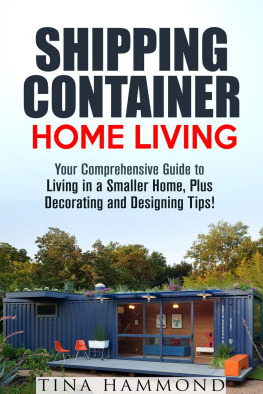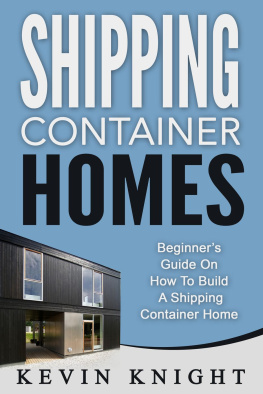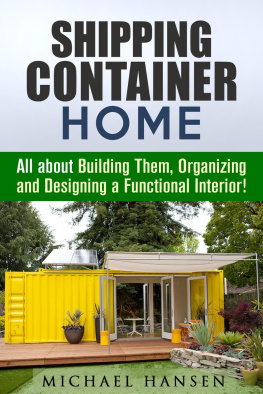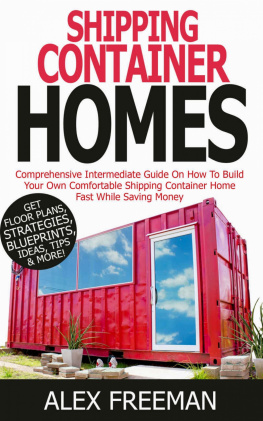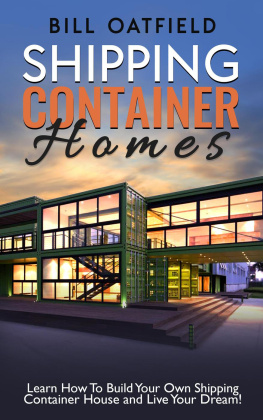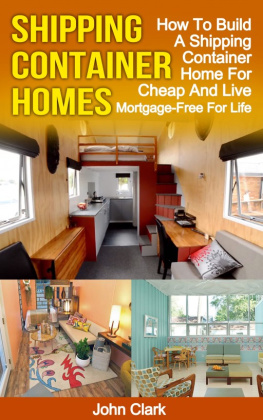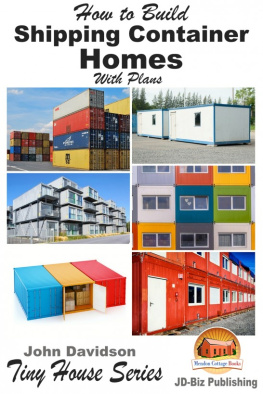About the Author
It's not easy to write in the third person...

Brodie Norris has been obsessed with houses since preschool. No, really. Here's a picture his Mum found of one of his early designs. Based on a 20' high cube container (we're pretty sure)...

After filling that gappy smile with adult teeth, Brodie pursued his love of (shipping container) houses by undertaking a degree in architecture, but realized a lot too late that involved designing boring things like museums and airports (bummer).
More recently, Brodie took his love of house porn to the next level -- establishing the website Lunchbox Architect. The popular site is dedicated not just to shipping container houses, but to innovative and affordable architecturally designed homes of all kinds.
About the Guide
While I've attempted to give you a good overview of how you might build a shipping container home, there are so many individual preferences, needs, and approaches, it is impossible and impractical to cover them all.
That said, this guide along with the accompanying resources section is a living beast. The resources section in particular will be constantly updated with new information and additional resources. And the best bit? It's all based on what you want! Shoot me an email (hello@lunchboxarchitect.com) if you have any ideas or questions about shipping container homes and I'll do my best to answer your question and include any additional information in the resources section.
We're a community of shipping container home enthusiasts. We can learn from each other, share what we know and help to change the landscape of domestic building with this nontraditional technique.
So don't be shy! Let me know what you want to see in future editions of this guide, and what you would find helpful in the resources section. Here are some of my ideas, let me know what piques your interest: Sample Plans and Example Documentation, In-depth Interviews with Shipping Container Home Owners, Typical Details, Product Recommendations.
Introduction
If you've used the internet recently (and I know you have), you will have noticed there are literally figuratively container loads of popular articles like "23 Surprisingly Gorgeous Homes Made From Shipping Containers" and "This Rusty Shipping Container Seems Abandoned. But Look Inside... It's Actually A Ravishing Home!" I didn't realise we described homes as 'ravishing'. But apparently we do.
Yep. Shipping Container Houses are all the rage on the internet. And for good reason. With a bit of skill, a shipping container can be transformed into a beautiful, low-cost, environmentally friendly home.
I say a bit of skill because, despite what some advocates (read: marketers) would have you believe, building a container home isn't much easier than building a traditional house. Because it's an unconventional building style in many ways it's even harder!
But don't worry. That's what this guide is for - to clearly explain the potential pitfalls and give you the skills to tackle your container project with confidence.
Believe it or not, the basics of Shipping Container Home design aren't actually about the peculiarities of building inside a shipping container at all. What's more important is to consider your site, your needs and how to balance what you want with the constraints of a small space.
Designing a shipping container home is more about designing for small, constrained spaces.
This guide contains a lot of general advice about designing and building your own home. While its focus is ways you can utilise used shipping containers as the structure for an affordable home, you might ultimately choose to use a different construction method for your project. Not to worry, we'll cover enough general planning and building advice to help you, even if you don't end up getting those three used shipping containers delivered to your freshly prepped site.
Ultimately you might decide that a shipping container home is not right for you. That's okay. A lot of the information in this guide can be applied to any type of construction. So read through it anyway, because even if you decide to buy a kit or prefab home, or build a custom house in a more traditional method, there is still important information about the design process, obtaining permits and basic construction principle which will help you with your project.
History of Shipping Containers
Think about the towering stacks of containers that line the shores of busy docks. They're probably full of the things we tend to take for granted - cheap consumer electronics from China, high quality marble tiles from Italy, or even fruit straight from the orange fields of California. None of this would be possible without the modern shipping container.
Believe it or not, the standardized shipping container we know today has only been around for about 50 years. Prior to this, poor old 'longshoremen' would load and unload ships full of bales, sacks and barrels using systems of pulleys, hooks and a lot of manpower. A single ship full of an average of 200,000 pieces of cargo would take a week to load and unload! Thanks to the standardized shipping container, turnaround time, theft, damage to goods and costs all went down.
We have a man named Malcolm McLean to thank for the relative efficiency and reliability of our modern-day shipping and transport networks. He patented a container which was physically strong -- with reinforced corner posts to allow for craning and stacking.
Since McLean's original design the container has evolved to become an international standard. Companies have refined the containers design to be stronger, lighter, cheaper to manufacture and more resilient in order to save money and time. Today we have a highly refined shipping container that is perfectly suited to its purpose and allows the transportation of good all around the world.

Image Source
It's only in the recent past the potential for shipping containers to be used for construction was realised.
Phillip C. Clark filed for a United States patent on November 23, 1987 described as "Method for converting one or more steel shipping containers into a habitable building at a building site and the product thereof". This patent was granted August 8, 1989 as patent 4854094. The diagrams and information contained within the documentation of this patent appear to lay the groundwork for many current shipping container architectural ideas.
In recent years the popularity of shipping containers as architecture - especially as affordable housing - has exploded. It seems the potential of disused contianers for housing is being explored. And the future of shipping contianers will involve a myriad of creative architectural applications. Perhaps your future home will be included in this future!
The Good News
Benefits of building a shipping container home
Using one or more shipping containers as the base for a home building project has some massive benefits;
- Designing and building a shipping container house is an affordable alternative to traditional building methods. It's a great base to start with. After all, you start with a strong steel structure, so you can save a lot of time and money on preliminary works and framing.



